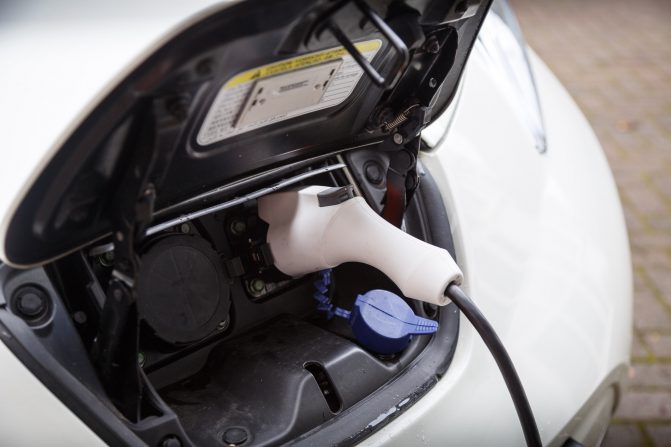
HOW ELECTRIC CARS ARE BUCKING THE LONG TERM OIL PRICE FORECAST
Photo from indiGo Auto Group
A few decades ago, most people would have laughed at the idea that electric cars could ever replace gas-powered ones. It’s always assumed that we would be stuck using fossil fuels for years to come.
But as the world has changed, so has our need for energy. Not since WWII have there been so many new technologies were born in the last 20 years. Many of these technologies rely on electric power rather than fossil fuels. In countries where this tech is more advanced, gasoline demand is in decline.
The prime example of this technology is electric vehicles. Therefore, it’s no surprise that analysts have reviewed the long-term oil price forecast in light of demand changes.
WHAT IS THE LONG TERM OIL PRICE FORECAST?
According to the website longforecast.com, oil prices should double in the next three years as we recover from the global pandemic. Like all markets, experts predict a decline beyond 2025, which ties in with estimations that electric cars will reach price parity in 2025.
From there, the forecast remains uncertain. Even the World Energy Outlook has shifted its projections lower by over 35%.
Much of this is due to COVID-19 restrictions in recent times. Still, note that new international legislation such as the 2030 ban on new gasoline cars in the UK reduces confidence in oil’s long-term price.
SHORT-TERM FACTORS
Oil price depends on several factors, including global oil supply, economic developments, and political events. Most analysts forecast the price of oil years or even decades into the future. But, over the past few years, the oil price shot up at a rapid rate.
Two primary factors affect the price of oil when one is pushing demand upwards and another reducing supply. This two-pronged attack speeds up the gains mentioned above over the next 3 years.
1. INCREASING DEMAND FROM EMERGING MARKETS
Developing nations like China, South Korea, and India (amongst others) are undergoing rapid economic growth. This increases the oil demand, but as these countries have minimal oil resources, they rely on imports.
2. THE SLOWDOWN OF OIL SUPPLY FROM NON-OPEC COUNTRIES
Most of the increase in new oil production is coming from OPEC countries. The US produces more than these countries, but this increase is not enough to counter slowing growth rates in North America and Europe.
As a result, significant amounts of US shale gas reserves remain untouched before 2025 at the earliest. Demand for imported gas and oil will continue to rise until then as North American consumption increases. This would leave tight oil reserves to meet growing demand.
But as recent times have shown, these forecasts mean nothing when the world suffers unexpected change. That said, here are a few ways electric cars affect oil prices and continue to do so.
ELECTRIC CARS
The long-term oil price forecast changed in recent times. Many experts predict that EV manufacturing will reach cost parity with gasoline cars as early as 2025.
Even since the Nissan Leaf came out in 2011, the cost per kWh of a high-voltage battery has dropped over 90%. Healthy competition is also a driver of competitive pricing. In particular, this includes legacy car manufacturers such as Volkswagen and new-age manufacturers such as Tesla.
 Photo from indiGo Auto Group
Photo from indiGo Auto Group
And the cost of ownership shrinks outside of the manufacturing process, too. Electric cars can already run for less than half the price per mile as gasoline cars in the USA.
In countries where gasoline costs are high such as the UK and Norway, demand is booming for electric vehicles. Not only do they perform well in colder climates, but with the right energy tariff, drivers are saving over $0.10c per mile!
SUSTAINABLE VEHICLES
With an increased demand for cheaper and eco-conscious fuel comes a conscious in our views of what materials are in our cars. Cars such as the BMW i3 contain 85% recyclable materials, including upholstery made from old plastic bottles.
Elon Musk’s Tesla Motors is also contributing to the auto industry with more sustainable materials. These materials include biodegradable plastics rather than conventional vehicles’ petroleum-based parts. Tesla is also working on the first cobalt-free battery. They try to find ways of easing the environmental struggles that come with making more EVs.
Electric vehicles are not only about saving money but a conscious choice for the environment at large. And as more and more consumers buy into the idea of sustainability over time, the petroleum industry will have to adapt.
Oil companies such as BP, Shell, and Total, are already buying up public electric charging companies and rebranding them. This tactic aims to gain a first-mover advantage in countries where EV adoption is on the rise.
RENEWABLE ENERGY
Electric cars will be a vital part of the world’s transition away from fossil fuels. The World Energy Outlook has shown that renewables will provide up to 85% of the world’s electricity by 2040.
In the last decade, producing renewable energy costs less and by a significant amount. In many places, solar power is now cheaper than fossil fuel-powered electricity. Many people estimate that producing electricity from renewables is less than fossil fuels such as coal in India and the US.
On top of this, the renewable energy sector is also experiencing a labor shortage in many countries. This shortage means expect more advances over time. Though production costs are coming down for renewables such as solar and wind energy, battery technology still lags.
THE FUTURE OF OIL IN CARS
It’ll be decades away yet before electric vehicles can replace gasoline worldwide. Yet, we are moving away from fossil fuels or our future. This means that the long-term oil price forecast changes in front of us as the demand for gasoline declines in the decades to come.
Keep reading our articles for the future of car news and advice!
